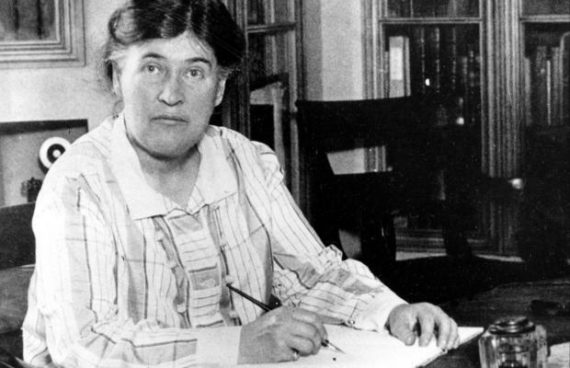A Review of Catharine Savage Brosman, Southwestern Women Writers and the Vision of Goodness, McFarland Press, 2016.
The term “man of letters” has fallen largely into desuetude over the last few decades, and for good reason. Very few such entities exist nowadays on the literary landscape either in this country or elsewhere. One is more apt to come across a spotted owl or a selfless politician than he is a genuine man of letters. When the term is applied, it is misused to mean merely someone who writes novels or poems or plays or perhaps creative non-fiction or criticism. A man of letters, however, holds a greater responsibility than just that to his own literary vocation. Part of his “job,” so to speak, is to uphold certain standards not only of literary production but of civilization in general – its manners, customs, and morals. He is entrusted with certain ideals of thought and behavior that might otherwise be lost if not preserved in his fiction or verse.
Thus his scarcity.
Creative writers today seem bent on destroying those ideals, not defending or uplifting them. Decadence for its own sake is the order of the day in today’s fiction and poetry, a relentless drive to shock readers for novelty’s sake.
Women writers too can be men of letters or, to modify a bit Russell Kirk’s lovely description of Flannery O’Connor, women of humane letters. We are fortunate to have among us today one such woman of letters, Catharine Savage Brosman, a productive poet, travel writer, literary historian, and critic, whose latest literary study is a consideration of five other women of letters with not only a geographical tie to each other but a common concern with preserving what is best in civilization, namely that of the American Southwest.
One of these women, Willa Cather, remains a familiar and revered name to most anyone with a serious interest in American literature, but to have her cast as a “Southwestern woman writer” is initially disconcerting. After all, Cather was born in Virginia, reared in Nebraska, and spent most of her professional and personal life in the Northeast (first in Pittsburgh, later in New York). But she frequently traveled to the Southwest, and some of her finest fiction, including her greatest novel, Death Comes for the Archbishop, is set in the region. Brosman makes strong qualifications for her placement in this category.
The names and reputations of the other writers considered here have, sadly, been obscured by the sands of time and diminishing literary standards. Brosman rescues them for us. They are Mary Austin, Laura Adams Armer, Peggy Pond Church, and Alice Marriott. Brosman considers each of these artists from a number of standpoints – the literary, of course, but also the sociological and the political as well. (She also prefaces her discussion of each woman with a brief but complete biography.) For a traditionalist, Brosman is well-versed in contemporary literary theory (at this point entirely engulfed by political ideology) and does not ignore it, but she does not allow her subjects to become cardboard cut-outs for some particular political cause or serious of esotericisms. Austin, a novelist, non-fiction writer, and anthologist of Native American poetry who wrote mostly of California, was an early environmentalist but not a radical one, and a feminist, but not one who might march comfortably alongside today’s version of the same, since she had an abiding respect for the traditions in which she was raised. (At the end of her life, having professed herself “not a Christian” for many years, she returned to the Methodist Church of her upbringing.) The same could be said for Cather, who while certainly unorthodox in a number of ways in her personal life, nevertheless set as one of the goals of her fiction writing an achievement of permanent values in relations both between humans and between humans and their landscapes.
And it was the Southwest that provided for Cather and the four others the repository for those values. Why? The answer is complicated and multifold. For some the Southwest was a vivid (and recent) example of the whole story of the American struggle to build a civilization out of a wasteland or on top of another civilization (that of Native Americans) that many considered primitive. That does not mean that Cather, Austin, Pond, and company approved of any efforts to strip brutally the area of its considerable Indian influence and culture. Indeed much of their work attempts at preserving what is best in that culture through a retelling of Indian myths, a rescue of Indian artifacts and stories/songs/poetry, and an imitation of Indian determination to use only what was needed from the land and no more.
Armer’s acts of preservation involved not only writing but painting and photography as well (a number of her visual works are included in the book), and Marriott approached the mission as an accomplished ethnologist and anthropologist in studying the lives of the Kiowas and the New Mexico Indians and Hispanics. Brosman writes, “…these writers…could study and speak of Native Americans without being accused of patronizing and imperialism….” She writes even earlier, “The southwestern lands evoked in writings by [Austin, Cather, Armer, Pond, and Marriott] were to them…exceptional, endowed by nature and history with a magnetic appeal, combining abundant beauties, exotic charm, and ineffable spiritual qualities.”
As one would expect from an accomplished poet, Brosman writes of these women with elegance and precision but also with a clear-eyed realization of where they would fit in today’s dialogues on race relations, women’s place in society, and the use of literature for purposes other than the literary. The greatest value of her book for the present critic is the introduction to four remarkable women writers hitherto unknown to him.
She has performed an act of rescue for the greater good of letters.







